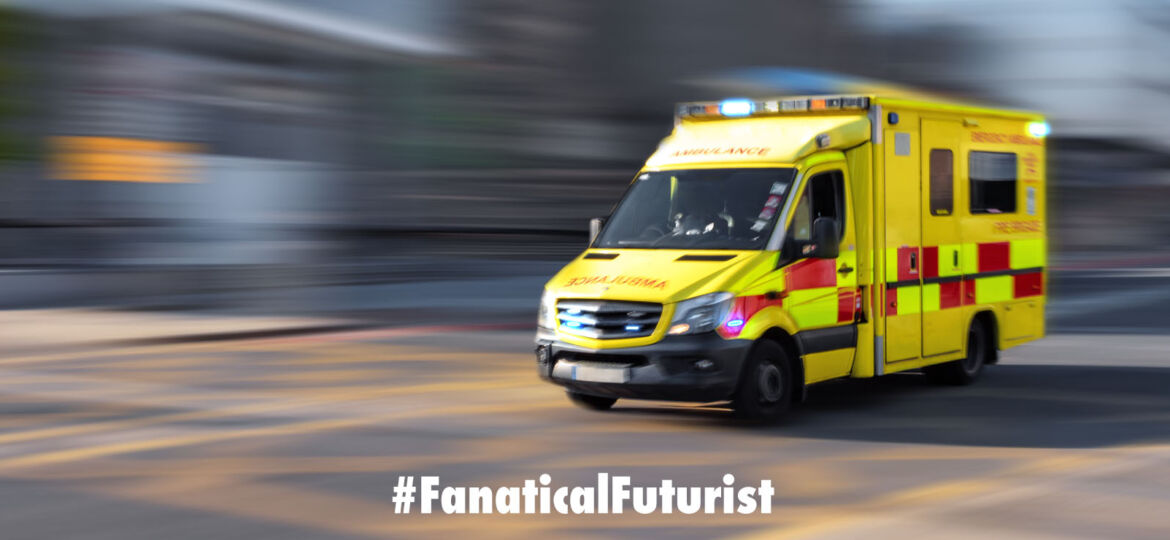
WHY THIS MATTERS IN BRIEF
Sometimes the medical experts you need are hundreds of miles away but now they can be right there with the patient thanks to 5G.
 Love the Exponential Future? Join our XPotential Community, future proof yourself with courses from XPotential University, connect, watch a keynote, or browse my blog.
Love the Exponential Future? Join our XPotential Community, future proof yourself with courses from XPotential University, connect, watch a keynote, or browse my blog.
The South Central Ambulance NHS Foundation Trust in the UK have just shown off their first 5G connected ambulance that enables the real time remote diagnosis of patients issues while they’re travelling in the ambulance, and seamlessly connects ambulance workers with surgeons and consultants back at a hospital in real time.
The ambulance was shown off at University Hospitals Birmingham NHS Foundation Trust’s (UHB) simulation lab in a collaboration with BT to show how 5G can be used in healthcare to improve patient outcomes and help ambulance crews and clinicians diagnose and treat patients faster before they get to the hospital.
During the demonstration he team showed off a paramedic working from an ambulance in the Edgbaston area of Birmingham who was connected over the 5G network to a clinician based over two miles away at UHB’s Medical Devices Testing and Evaluation Centre.
Wearing a specially equipped Virtual Reality (VR) headset the clinician was able to see exactly what the paramedic saw in the ambulance, and then using a joystick they were able to remotely direct the paramedic in real time to perform the necessary scans, as well as get important close up footage of the wounds and injuries of a patient.
The clinician did this by speaking to the paramedic to look in a particular direction, or, in the case of a scan, by sending control signals over the live 5G network to a robotic or haptic glove worn by the paramedic that used small vibrations to guide the paramedics hand to where the clinician wanted the ultrasound sensor to be moved. This allowed the clinician to remotely control the sensor position, whilst seeing the images in real time.
There was also a camera in the ambulance which transmitted a high definition view of the paramedic and patient. Together with live feeds of the patient’s ultrasound scan, the clinician was then able to recognise vital signs and view medical records in real time in VR.
David Rosser, UHB chief executive, said: “The characteristics of 5G mean it should provide many advantages, including speeding up diagnoses for patients and potentially reducing the number of ambulance and A&E department visits. In particular, being able to perform diagnoses remotely means a doctor or clinician could determine an appropriate care pathway without necessarily having to see someone in hospital.”
Fotis Karonis, 5G executive lead for BT Enterprise added: “Not only is 5G capable of ultrafast speeds it has much lower latency meaning there is little to no delay when transmitting data over the network. This means things happen in ‘real time’ so this is of significant interest to the NHS because of its potential for medical applications, such as diagnostics and preventative healthcare. This capability provides efficiency opportunities for both hospital and ambulance trusts by reducing the number of referrals into hospital and patient trips.”
















